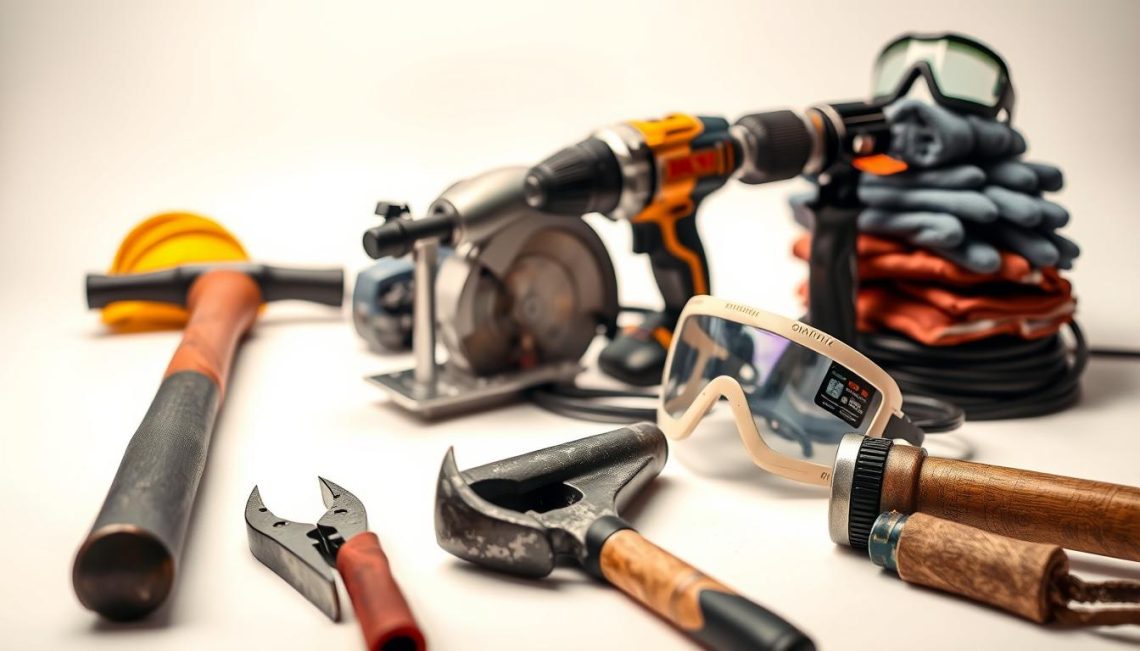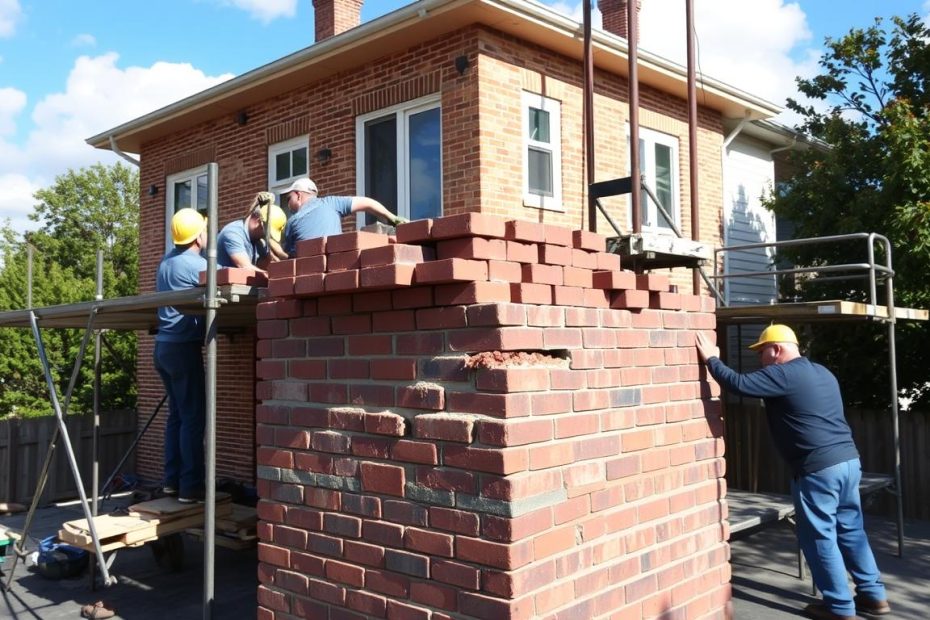When a chimney becomes a safety concern or is no longer needed, its removal is a significant project that requires careful planning. Whether you’re renovating your home or addressing safety issues, understanding the chimney removal process is crucial.
We will walk you through the steps involved in removing a chimney, from initial planning to final restoration. This includes the essential tools and materials needed, the step-by-step removal process, and considerations after the removal is complete.
Our goal is to provide a comprehensive guide that makes the process as straightforward as possible, ensuring you have all the necessary information to complete the project successfully.
Planning Your Chimney Removal Project
To remove a chimney safely and effectively, careful planning is not just recommended, it’s necessary. This phase is critical in ensuring that the removal process does not adversely affect your home’s structure or compromise safety.
Assessing Structural Implications
Assessing the structural implications involves understanding how the chimney is integrated into your home’s framework and identifying potential risks associated with its removal. This includes evaluating the condition of the surrounding structure and anticipating any necessary repairs or reinforcements post-removal.
Obtaining Necessary Permits
Before commencing the chimney removal, it’s crucial to obtain any necessary permits as mandated by local building codes and regulations. Failure to secure the required permits can result in fines and complications when selling your property.
| Permit Type | Description | Typical Cost |
|---|---|---|
| Demolition Permit | Required for removing structures like chimneys | $50-$200 |
| Building Permit | Necessary for any structural changes or repairs post-removal | $100-$500 |
DIY vs. Hiring Professionals
Deciding whether to undertake the chimney removal yourself or hire professionals depends on several factors, including your DIY skills, the complexity of the job, and your budget. While DIY removal can save on labor costs, hiring professionals ensures the job is done safely and correctly.
“Hiring a professional to remove your chimney can be more cost-effective in the long run, as they can identify and address potential issues that might arise during and after the removal process.”
Ultimately, the decision should be based on a thorough assessment of your capabilities and the project’s requirements. Considering the potential risks and complexities, hiring professionals is often the recommended course of action for ensuring a safe and successful chimney removal project.
Essential Tools and Materials for Removing A Chimney
When it comes to removing a chimney, having the right tools and materials is crucial for a safe and efficient process. The chimney removal process can be hazardous if not done properly, so it’s vital to be well-prepared.

Safety Equipment Requirements
Safety should be our top priority when removing a chimney. We need to wear protective gear, including hard hats, gloves, and safety glasses, to shield ourselves from falling debris and dust. Ensuring we have the right safety equipment will significantly reduce the risk of injury during the removal process.
Demolition Tools Needed
For the actual demolition, we’ll require a set of robust tools. Hammers, chisels, and possibly power tools like reciprocating saws or drills, will be necessary for breaking down the chimney structure. Using the right demolition tools will make the process more manageable and efficient.
Debris Removal and Disposal Solutions
After demolishing the chimney, we’ll need to address the debris removal and disposal. This might involve renting a dumpster or hiring a professional debris removal service to ensure that the waste is handled and disposed of properly. Having a plan in place for debris removal will keep the site clean and safe.
“Safety is not just a precaution, it’s a necessity in chimney removal.”
Step-by-Step Chimney Removal Process
When it comes to DIY chimney removal, understanding the step-by-step process is essential. Removing a chimney is a complex task that requires careful planning, the right tools, and a systematic approach to ensure safety and efficiency.
Preparing the Work Area
Before starting the chimney removal, we need to prepare the work area. This involves clearing the surrounding space of furniture and covering the floor and nearby areas with protective sheets to prevent damage from debris.
Removing the Chimney from Top to Bottom
The actual removal of the chimney starts from the top and works its way down. The method used can vary depending on the type of chimney.
Brick and Masonry Chimneys
For brick and masonry chimneys, we typically dismantle the structure brick by brick, taking care to remove mortar and debris as we go.
Metal Flue Chimneys
Metal flue chimneys, on the other hand, might be removed in larger sections, depending on their design and accessibility.
Handling the Roof Opening
After removing the chimney, we need to address the roof opening. This may involve sealing the opening or installing a roof patch to maintain the integrity of the roof.
Addressing the Interior Portions
Finally, we need to address the interior portions of the chimney, including any chimney breasts or flues that need to be sealed or removed. This step is crucial for completing the removal process and ensuring the home remains safe and secure.
After the Removal: Restoration and Final Considerations
After completing the chimney removal, several restoration tasks may be necessary to ensure your home remains safe and looks its best. We need to repair or seal the roof where the chimney was located, finish interior surfaces where the chimney breast was, and ensure all remnants of the chimney are removed or properly sealed.
The cost of these final tasks can vary, adding to the overall chimney removal cost. Depending on the extent of the removal and our DIY capabilities, we might need to hire professionals for some of these finishing tasks, ensuring a high-quality result. Opting for professional chimney removal services can be beneficial, as they can handle both the removal and the subsequent restoration tasks efficiently.
By considering these final considerations, we can ensure a successful chimney removal project that meets our needs and enhances our home’s overall condition.
